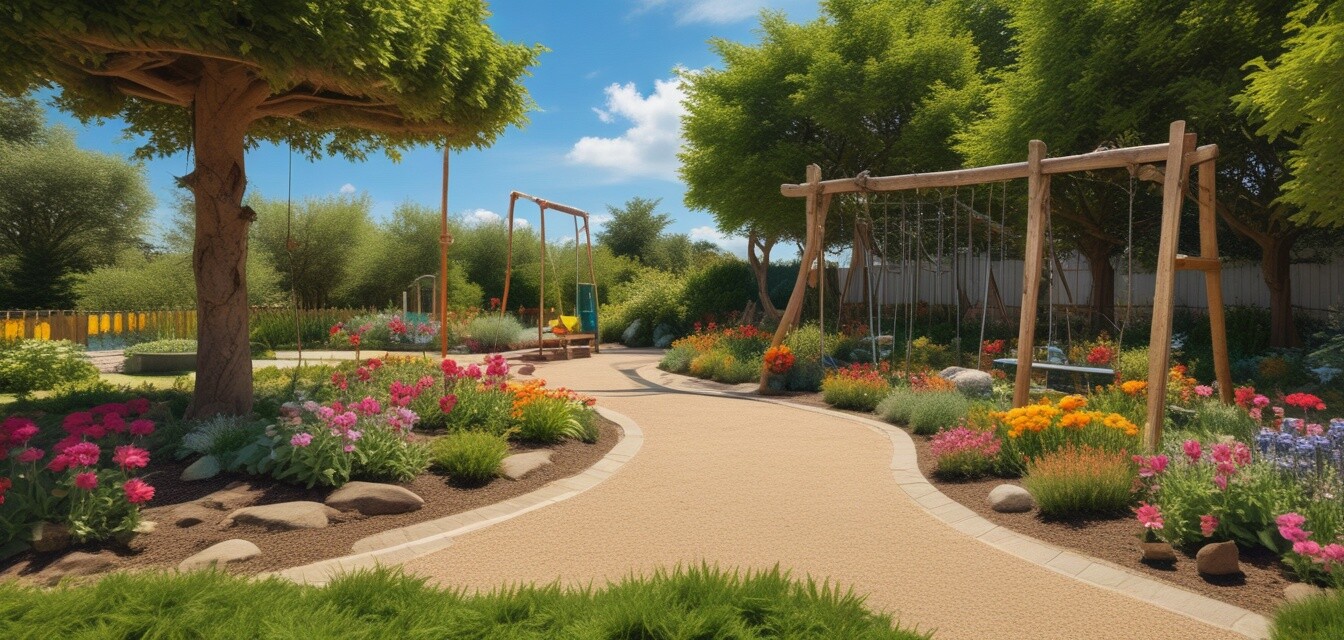
Building a Family-Friendly Garden
Key Takeaways
- Design with safety and accessibility in mind.
- Incorporate exploratory elements to engage children.
- Choose colors and textures that spark creativity.
- Utilize eco-friendly materials and plants.
- Plan family activities that connect everyone with nature.
Creating a family-friendly garden can greatly enhance your outdoor space, providing a safe haven for children to explore and engage with nature. This article outlines essential considerations while offering practical tips to inspire your gardening journey. Whether you're starting from scratch or revamping an existing space, let's discover how to design a garden that is not only visually appealing but also functional and enjoyable for the littlest members of your family.
Why a family-friendly garden matters
Designing a safe and adaptable garden can provide numerous benefits for children, fostering their connection with the natural world. A well-thought-out garden promotes creativity, physical activity, and mental well-being. When children feel safe and free to explore, they tend to develop a healthier relationship with their environment. Here’s how you can achieve that:
1. Create safe play zones
Establish play areas with soft and non-toxic surfaces. Here are some options you might consider:
| Material | Benefits |
|---|---|
| Rubber mulch | Soft landing, less chance of injury. |
| Natural grass | Cool underfoot, promotes outdoor play. |
| Synthetic turf | Always green, low maintenance. |
| Sand | Encourages creativity, easy to manage. |
2. Use child-friendly plants
Choosing the right plants is crucial for a family-friendly garden. Avoid toxic plants and opt for varieties that children can safely touch and even taste. Here are some excellent choices:
- Sunflowers
- Marigolds
- Strawberries
- Snap peas
- Herbs like mint and basil
3. Add creative exploration areas
Incorporating elements that invite exploration can help ignite children's imaginations. Here are some ideas:
- Garden mazes using low hedges or flowers
- Sandboxes with simple toys
- Water features with small fountains or ponds
- Raised garden beds for planting
Designing with nature in mind
Consider the layout of your garden to ensure seamless interaction with nature. Here are critical aspects to focus on:
1. Create pathways
Paths guide children safely through the garden and can be made from various materials.
| Path Material | Features |
|---|---|
| Wood chips | Soft and natural, blends with the environment. |
| Gravel | Easy to maintain, allows for good drainage. |
| Stepping stones | Fun to walk on and can be arranged in various patterns. |
2. Engage with colors and textures
Incorporating various colors and textures in your garden design can stimulate children's creativity. Consider using:
- Brightly colored flower beds
- Textured leaves from different plants
- Accessible art installations made from natural materials
Encouraging family activities
Involve the whole family with garden activities that encourage teamwork and connection. Some ideas include:
- Creating a family vegetable patch where everyone can participate.
- Setting up seasonal fairs or picnics in the garden.
- Organizing nature scavenger hunts.
Promoting eco-friendly gardening practices
Ensure your gardening methods respect nature and support sustainability. Here are a few practices to consider:
- Use organic fertilizers to promote healthy soil.
- Incorporate composting and waste management setups in your garden.
- Choose native plants to reduce water usage and promote local wildlife.
Enhancing your outdoor space with a family-friendly garden can lead to endless joy and exploration for children. By integrating safety, creativity, and sustainability, you’re on the path to building a nurturing environment that everyone can enjoy. Remember to explore our other garden design ideas for additional tips on transforming your landscape.
Pros
- Encourages outdoor play and creativity.
- Promotes a healthy connection with nature.
- Helps instill gardening skills in children.
- Offers a safe space for family activities.
Cons
- Requires regular maintenance and care.
- Initial setup can be time-consuming.
- A limited budget may restrict design possibilities.
For more tips about creating the perfect garden, check out our Buying Guides page for helpful resources. You can also explore our Greenhouses & Plant Protection section to learn how to safeguard your plants as you enhance your family-friendly space.